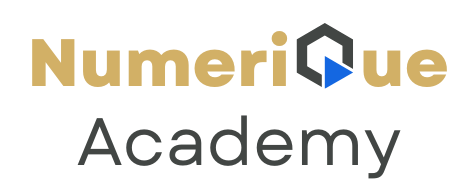If you’re interested in becoming a full-stack web developer, the MERN stack is one of the most powerful and in-demand technologies to learn today. But what exactly is the MERN stack? How does each part work, and why is it so popular?
In this beginner-friendly guide, we’ll break down everything you need to know about the MERN stack—what it is, how it works, and why it’s a great choice for building modern web applications.
What Is the MERN Stack?
MERN is an acronym that stands for MongoDB, Express.js, React.js, and Node.js. It’s a JavaScript-based tech stack used for building full-stack web applications, meaning it covers both the frontend (client side) and the backend (server side).
Here’s a quick breakdown of each component:
- M – MongoDB: A NoSQL database where your app stores data as JSON-like documents.
- E – Express.js: A lightweight web framework for Node.js that simplifies server-side development.
- R – React.js: A popular frontend library developed by Facebook for building user interfaces (UI).
- N – Node.js: A runtime environment that allows you to run JavaScript on the server.
The beauty of MERN is that it uses JavaScript throughout the entire application, from front to back. This makes it easier to learn and faster to build with, especially for beginners.
How the MERN Stack Works Together?
Let’s see how the components interact in a typical web app:
- Frontend – React.js
React builds the UI of your application—the parts users see and interact with (buttons, forms, etc.). It communicates with the backend using HTTP requests (usually via Axios or Fetch API). - Backend – Express.js + Node.js
When the frontend sends a request (like “Get user data”), Express receives it and handles the logic. Node.js runs this server-side code. Together, they form your RESTful API. - Database – MongoDB
MongoDB stores your app’s data—users, products, orders, etc. Express and Node interact with MongoDB using an Object Data Modeling (ODM) library like Mongoose.
So in a nutshell:
React → makes request → Express/Node → processes request → MongoDB → sends data back → React displays it.
Why Learn the MERN Stack?
Here are some reasons why MERN is a top choice for developers:
1. JavaScript Everywhere
One language to rule them all. No need to juggle different languages for frontend and backend—you just need to master JavaScript.
2. High Demand in Job Market
MERN developers are highly sought after, especially in startups and tech companies. It’s a skill set that can open doors to many remote and freelance opportunities.
3. Open Source & Free
All four technologies are open-source, have large communities, and are constantly improving.
4. Scalable & Flexible
The stack can power anything from simple to complex apps, including e-commerce platforms, social networks, and SaaS tools.
5. Strong Community Support
Thanks to its popularity, there’s tons of learning content, tutorials, and community support available online.
Tools You’ll Use in a MERN Project
- VS Code – Code editor
- MongoDB Atlas – Cloud database service
- Postman – API testing
- Git & GitHub – Version control
- npm / yarn – Package managers
- Mongoose – To model and connect MongoDB with Node/Express
Sample Project Ideas to Practice
If you want to get hands-on with MERN, here are a few beginner-friendly project ideas:
- User Authentication System (login/signup)
- Task Manager or To-Do App
- Mini E-commerce Store
- Blog App with Comments
- Online Course Platform
Learning Resources
- MongoDB University
- React Documentation
- Node.js Docs
- freeCodeCamp’s MERN Tutorial
Final Thoughts
The MERN stack is a fantastic path into the world of full-stack web development. By learning it, you not only build powerful apps but also equip yourself with a modern skill set that’s in demand globally.
Whether you’re just starting or transitioning from frontend to full-stack, MERN is a smart investment of your time.

